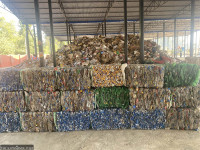Money
Central bank expresses concern as lending outpaces deposit collection
Lending totalled Rs410.13 billion and deposit collection amounted to Rs314.51 billion during the period mid-July to mid-April
Rajesh Khanal
A sharp rise in lending by banks and financial institutions outpacing their deposit collection is likely to impede the task of achieving financial stability, said Nepal Rastra Bank unveiling the third quarterly review of the Monetary Policy for 2018-19.
With credit flow outstripping deposit collection, pressure has been put on the credit to core capital-cum-deposit ratio which cannot exceed 80 percent as per central bank regulations. In April, the capital-cum-deposit ratio of banks stood at 78.21 percent, as per the revised monetary policy. Due to this reason, banks have been reluctant to reduce the lending interest rate despite a fall in the base rate.
According to Nepal Rastra Bank’s macroeconomic report, the base rate has come down to 9.64 percent from 10.47 percent in the first nine months of the current fiscal year. However, banks are found charging interest rates as high as 15 percent per annum which, according to the private sector, has resulted in a high cost of funds and a slowdown in investment growth.
“There is pressure on the availability of loanable funds with the widening gap between lending and deposit collection thus imposing a high risk in the stability of the financial sector,” states the central bank in the review document. “As a result, the ratio of the resource gap to the country’s Gross Domestic Product is expected to rise to 9.9 percent in the current fiscal year from 8.1 percent last year.”
During the period mid-July to mid-April, lending by banks and financial institutions totalled Rs410.13 billion, a rise of 17 percent year-on-year. During the same period, deposit collection amounted to Rs314.51 billion, up 11 percent year-on-year, showing a serious mismatch between deposit collection and credit disbursement.
At the start of the fiscal year in mid-July 2018, lending by banks and financial institutions stood at Rs2.42 trillion while their total deposit collection amounted to Rs2.83 trillion. By April-end, lending had swelled to Rs2.83 trillion while deposit collection reached Rs3.15 trillion, according to the macroeconomic report of Nepal Rastra Bank.
Of the loans and advances, the portion of overdraft increased by Rs54 billion, home loans increased by Rs32 billion and hire purchase loans increased by Rs12 billion.
In its policy review, the central bank states that it has planned to intensify open market operation to maintain short-term interest rates at a rational level to stabilise interest rates. Under open market operation, the apex monetary authority conducts purchase/sale of credit instruments in the market.
Laxmi Prapanna Niroula, spokesperson for Nepal Rastra Bank, said the central bank had been trying to maintain liquidity in financial institutions by using open market tools such as standing liquidity facility and foreign exchange intervention. “In addition, via moral suasion, the central bank is pressurising banks to provide credit in alliance with deposit collection,” said Niroula.
In the Monetary Policy review, the central bank expressed satisfaction over the inflation rate in the country. The moderated consumer price index rose by 4.4 percent during the review period. In the mid-term review of the policy, the central bank revised the inflation rate to 5.5 percent this year, which it expects to be within the limit by the end of this fiscal year.




 16.12°C Kathmandu
16.12°C Kathmandu















